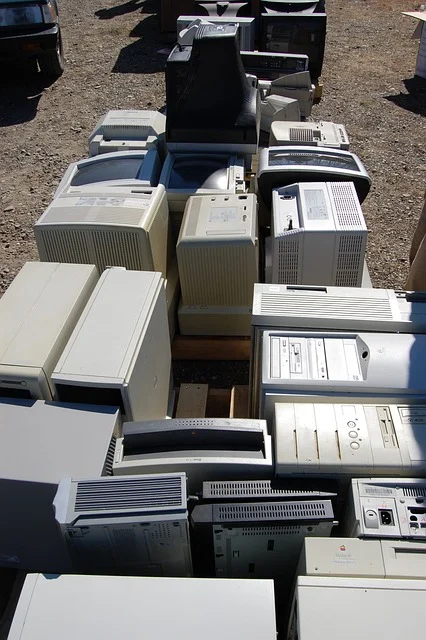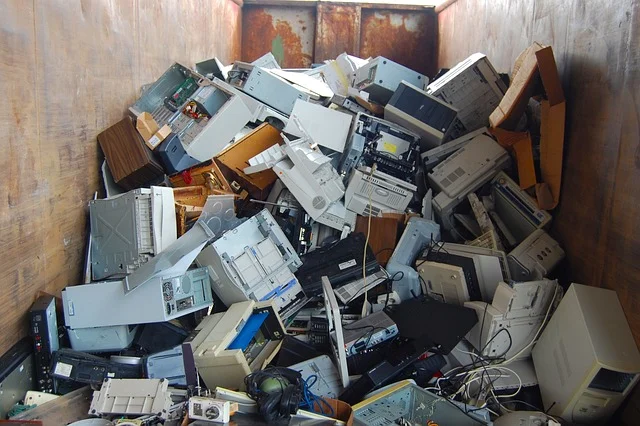In the heart of Texas, the city of Austin stands as a beacon of environmental responsibility, particularly in the realm of electronic waste (e-waste) management. With a growing tech industry, the need for responsible disposal and recycling of computers has never been more critical.
To recycle computers in Austin properly, identify a local e-waste recycling center, back up and erase your data for security, and transport your computer to the center. Ensure the facility follows environmental guidelines for responsible recycling.
This guide aims to illuminate the path for both individuals and businesses in Austin seeking to recycle their computers responsibly, contributing to a greener future.
Understanding Electronic Waste

Electronic waste, or e-waste, is one of the fastest-growing waste streams globally, posing significant environmental challenges. In Austin, the surge in technology use has led to an increase in discarded computers.
But Austin is committed to leading the charge in e-waste management. The city has implemented various policies and programs aimed at encouraging residents and businesses to recycle their electronic devices, including computers, in an environmentally sound manner.
Recycling computers in Austin not only helps in reducing environmental pollution but also conserves valuable resources. It supports the local economy by creating green jobs and positions Austin as a leader in sustainable practices.
Step-by-Step Guide On How to Recycle Computers In Austin
Recycling computers in Austin is a straightforward process, yet it requires careful attention to ensure both data security and environmental compliance. Here’s a detailed guide:
- Identifying a Recycling Center: Begin by locating a reputable recycling center in Austin that specializes in handling e-waste. You can find these centers through online directories, city resources, or community recommendations. Ensure that the center you choose adheres to responsible recycling practices and complies with environmental regulations.
- Data Backup and Security: Before recycling, back up any important data stored on your computer. Use cloud services, external hard drives, or USB flash drives for this purpose. Once the backup is complete, ensure you erase all personal data from the computer’s hard drive. This can be done through a factory reset or by using specialized software for data wiping, which overwrites your data, making it unrecoverable.
- Physical Preparation: If your computer has any removable batteries or external accessories, remove them. Batteries, especially, need to be disposed of separately due to their hazardous materials. Check if the recycling center accepts peripherals like keyboards, mice, and monitors, or if they need to be recycled separately.
- Transportation: Safely transport your computer to the recycling center. If you have multiple devices or large peripherals, consider arranging transportation that can accommodate the size and number of items. Some recycling centers in Austin might offer pickup services, so inquire about this possibility.
- Recycling Process: At the recycling center, your computer will be assessed to determine the most appropriate recycling method. Components that can be reused, like RAM, hard drives, or graphic cards, are often refurbished. Other parts, such as plastics and metals, are sent to separate facilities for material recovery.
- Certificate of Recycling: After the recycling process, ask for a certificate of recycling from the center. This document serves as proof that your computer was responsibly recycled and can be particularly important for businesses for record-keeping and compliance purposes.
- Staying Informed: Keep yourself informed about the recycling policies and advancements in Austin. Regulations and technologies in e-waste management are continually evolving, and staying updated will ensure that you continue to recycle computers in the most effective way possible.
Following these steps not only contributes to a healthier environment but also ensures that you’re part of Austin’s commitment to sustainable and responsible e-waste management.
Identifying Recyclable Components of Computers

Knowing which parts of your computer can be recycled is crucial for effective recycling.
Here’s a breakdown of the most common recyclable components:
- Metal Components: Computers contain various metals, including aluminum, copper, and steel, found in the casing, wiring, and internal components. These metals are highly recyclable and can be melted down and reused in the production of new products.
- Circuit Boards: The motherboard and other circuit boards are rich in valuable metals like gold, silver, and palladium. These are extracted and reused in new electronic devices.
- Plastic Parts: The outer casing and some internal components are made of plastics, which can be shredded, melted, and remolded into new plastic products.
- Glass and Monitors: Older CRT monitors contain leaded glass, while newer LCD screens have mercury-containing backlighting. Both types need specialized recycling to handle these hazardous materials safely.
- Hard Drives: While hard drives can be recycled for their metal content, they often undergo secure destruction due to the sensitive data they contain.
- RAM and Expansion Cards: These components are often refurbished and reused in other computers, as they contain valuable metals and are generally in good condition.
Understanding the recyclable components helps in segregating and preparing the computer for recycling, ensuring maximum material recovery and environmental safety.
Local Recycling Centers in Austin
Austin is home to several recycling centers that specialize in handling electronic waste, including computers. Some notable centers include:
- Austin Recycle & Reuse Drop-off Center: This facility accepts a wide range of e-waste, including computers and peripherals. They ensure environmentally responsible recycling and offer services for both residents and businesses.
- EcoATM: Located in various spots around Austin, these kiosks offer a convenient way to recycle small electronics, including laptops.
- TechCollective: Specializing in IT equipment recycling, they offer both drop-off and pick-up services, ensuring secure data destruction and responsible recycling.
- Best Buy Recycling Program: Best Buy stores in Austin accept a wide range of electronic devices for recycling, including computers and accessories.
Before visiting, check the specific acceptance policies and operational hours of these centers. Some may charge a fee or have limitations on the type and quantity of e-waste.
Recycling vs. Refurbishing Computers: What’s Better?
Choosing between recycling and refurbishing old computers depends on several factors:
- Condition of the Computer: If the computer is still in good working condition or requires minor repairs, refurbishing can give it a new lease on life. Refurbished computers can be donated to schools, and non-profits, or used as a backup device.
- Environmental Impact: Recycling breaks down a computer into raw materials, which requires energy and resources but ensures materials are reused. Refurbishing extends the life of the existing device, reducing the need for new resources.
- Economic Considerations: Refurbishing can be more cost-effective, as it can create affordable computing options for those in need. Recycling, while sometimes incurring a small fee, contributes to the raw materials market.
- Data Security: If a computer contains sensitive data, recycling with secure data destruction might be the safer option compared to refurbishing, where data might potentially be recovered.
Refurbishing is ideal for computers that are still functional or easily repairable, offering both environmental and social benefits.
Recycling, on the other hand, is more suitable for end-of-life computers, ensuring safe disposal and material recovery. Both options play vital roles in sustainable electronic waste management in Austin.

I’m Thomas, the owner of SustainableWave. Passionately promoting a sustainable planet. With experience in various eco-roles, I’ll share green tips, sustainability hacks, and personal eco-journeys on my blog.






